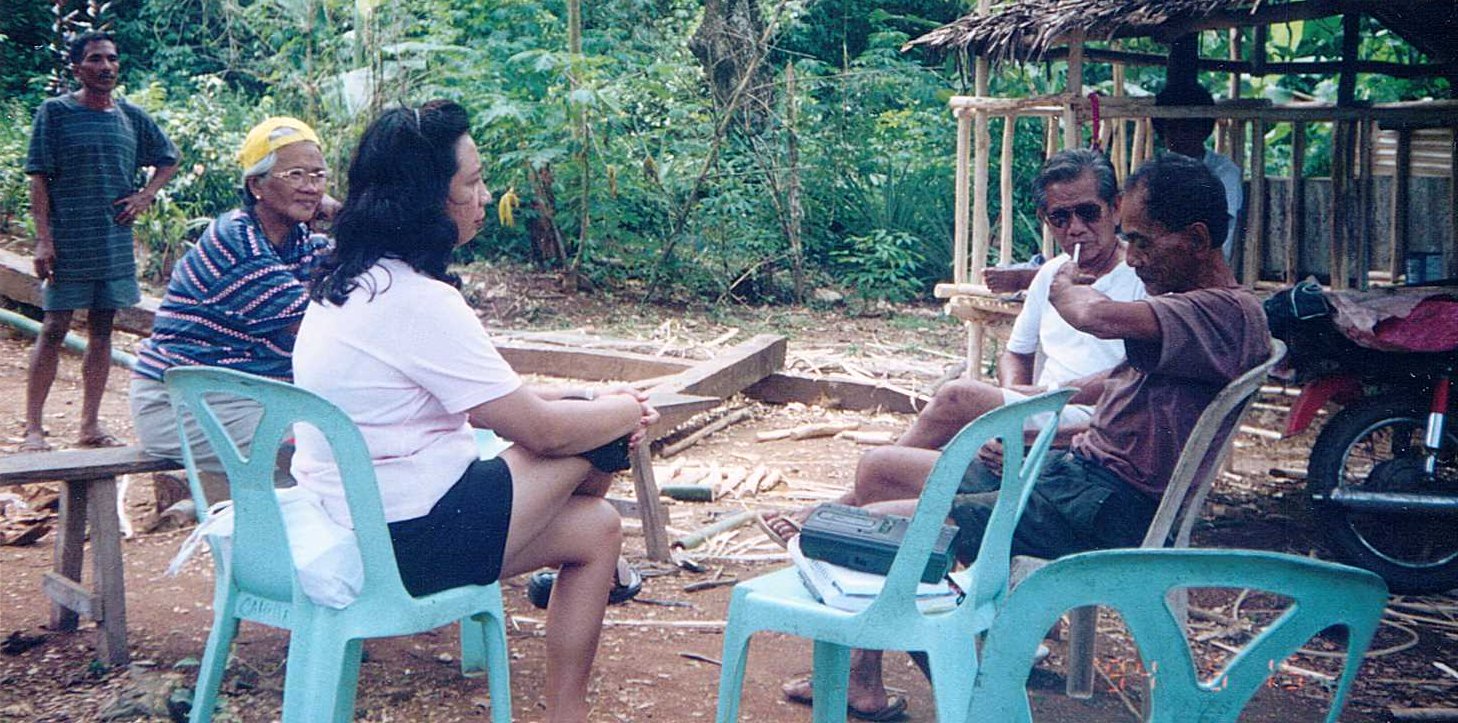Mission
The Cuyonon Language and Culture Project (CLCP) aims:
to establish a standard writing system for Cuyonon, a language of Palawan Province in the Philippines;
to create the first comprehensive bilingual dictionary of the Cuyonon language;
to foster an awareness of the Cuyonon cultural heritage among Cuyonons, other Filipinos, and scholars generally;
to provide a valuable tool for anyone interested in learning about the language and culture of Cuyo.
Our greatest hope is that the Cuyonon language can be preserved, celebrated, and passed down to future generations. This dictionary offers a lasting record of a language and culture that is at risk of disappearing.
In 1976, a major storm forced Ester Timbancaya Elphick, traveling by boat to Cuyo, to spend a night in Puerto Princesa, Palawan. There she met Virginia “Ginny” Howard de Vries, a resident missionary. That night, the two formed a remarkable friendship that would lead to their 1994 decision to create a Cuyonon-English dictionary.
As a graduate student of linguistics, Ester had been studying Cuyonon, her native language, since the 1960s. Ginny and Filipino colleagues had published a Cuyonon New Testament in 1982, and Ginny spoke the language well. Ester and Ginny (now Virginia Howard Sohn) sought advice from the Summer Institute of Linguistics (SIL). The SIL directed them to Len Newell, a retired missionary who had compiled two distinguished dictionaries of Philippine languages. Len stipulated that the dictionary should be based on the “natural speech” of Cuyonons, recorded in their own settings.
Accordingly, from 1999, Phebe Abis, Job Valdez, and other researchers, directed by Raquel Tablazon, taped Cuyonon speech in Puerto Princesa, small Palawan barrios, and on Cuyo itself. By 2005, they had acquired 200, hour-long tapes. With words from additional sources, a corpus of over 1,450,450 words was identified. Cuyonon culture was covered both systematically and in detail: fishermen discussing fish species, lines, nets, and tides; midwives recounting the problems of childbirth; builders explaining the construction of boats and buildings; etc.
To help raise funds for this ambitious enterprise, Ester, Ginny, and their husbands (Rick Elphick and Don Sohn) established the Cuyonon Language and Culture Project, Inc. (CLCP), a non-profit corporation. Ester and Ginny developed a Cuyonon orthography (writing system), which they copyrighted. And they established in the Philippines a seven-person advisory panel of Cuyonon-speakers, whose first task was to advise on the orthography.
Tested on numerous Cuyonon speakers, the Elphick-Sohn orthography has proven clear, accurate, consistent, and easy to learn. The next challenge was to transcribe the recorded speech into computer-readable text and input it into SIL software. This was done by Ester, Ginny, and Filiusa (“Feling”) Timbancaya, but for the most part by Ellen Tablazon Kingsbury, a native speaker of Cuyonon trained in the Elphick-Sohn orthography.
During the transcription, the Cuyonon speech was also “parsed,” that is, divided into roots, suffixes, prefixes, and infixes. This parsing enables the dictionary to illustrate the fascinating network of each word’s derivatives—far more numerous and more complex than equivalents in English or other Western languages. From the transcribed text, Feling and the other compilers condensed the corpus into a dictionary of approximately 40,000 entries. Each entry consists of a definition in English, identification of the word’s root and part of speech, a sample sentence using the word in Cuyonon, and an English translation of the sample sentence. A list of English words guides users to their Cuyonon equivalents.
In February 2025, the CLCP will proudly launch a preliminary version of the first Cuyonon-English dictionary, more than thirty years after it was begun in earnest.





